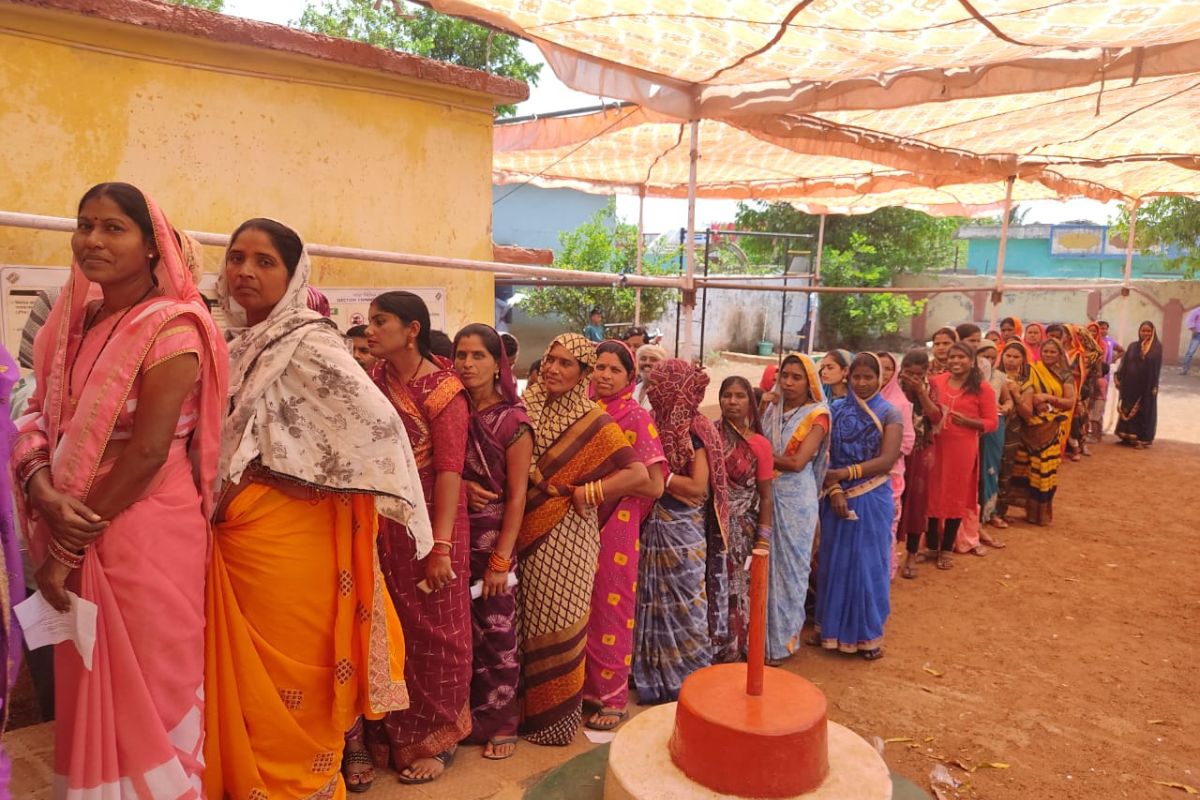Chhattisgarh polls: 70% voter turnout amid Naxal violence
Minutes before the polling began, Maoists detonated an IED in Dantewada; in Pamed area of Bijapur district, 5 CoBRA personnel were injured in gunbattle with the Naxals
From the remote Bastar region to bustling urban centers like Raipur and Bilaspur, citizens came out in huge numbers to exercise their democratic rights.

File Photo
The Lok Sabha polls in Chhattisgarh, spanning three phases across 11 constituencies, have drawn to a close. The electoral battlegrounds of 11 Lok Sabha seats in Bastar, Kanker, Mahasamund, Rajnandgaon, Durg, Raipur, Bilaspur, Korba, Janjgir-Champa, Raigarh, and Surguja witnessed fervent voter participation.
From the remote Bastar region to bustling urban centers like Raipur and Bilaspur, citizens came out in huge numbers to exercise their democratic rights.
Advertisement
The Election Commission released the final figures for the third and concluding phase of polling in Chhattisgarh. In the final phase, 71.98% voting was recorded across seven constituencies (Raipur, Bilaspur, Korba, Raigarh, Durg, Janjgir-Champa, and Surguja).
Advertisement
Surguja witnessed the highest turnout at 79.89%, while Bilaspur recorded the lowest at 64.77%. Noteworthy spikes in voter engagement were observed in Bastar during the first phase and in Kanker, Mahasamund, and Rajnandgaon during the second phase, surpassing the 2019 turnout figures.
The polling data reveals significant increase in voter turnout in key constituencies: Bastar by 2.26%, Kanker by 1.97%, Mahasamund by 0.51%, and Rajnandgaon by 1.38%. Conversely, Bilaspur witnessed a marginal decrease of 0.41%, with Raipur, Korba, Janjgir-Champa, Raigarh, and Surguja recording higher turnout percentages.
Overall, there has been a commendable 0.82% increase in voter participation compared to 2019, marking a positive stride in Chhattisgarh’s electoral landscape.
The heightened voter turnout has sparked intense speculation among political pundits. Meanwhile, political parties and their candidates are expressing optimism about their respective victories. Typically, higher voter turnout in Chhattisgarh is seen as advantageous for the ruling BJP in the Lok Sabha, while it can cause concern for the state government in the assembly elections. With voting percentages on the rise across all three phases, the BJP appears satisfied with the unfolding events in the state.
The BJP’s optimism finds resonance in the historical trend of vote share dominance, with successive elections witnessing the party maintaining a lead over Congress. Notably, Congress has grappled with securing victory in key constituencies, with Rajnandgaon and Kanker remaining elusive since the state’s inception. However, sporadic triumphs, such as Jyotsna Mahant and Deepak Baij’s victory in Korba and Bastar respectively in 2019, underscore Congress’s resilience against formidable opposition.
Over the past three Lok Sabha elections, Chhattisgarh has witnessed a consistent upward trajectory in voter turnout, signaling a robust endorsement of democratic values. From 55.3% in 2009 to 73.8% in 2019, the increase of nearly 18% over 15 years underscores the electorate’s unwavering commitment to participatory democracy.
With the conclusion of the final phase of voting, all eyes are now set on June 4th, the day when election results will be disclosed. Electronic Voting Machines (EVMs) are securely stored, embodying the collective voice of millions of voters in Chhattisgarh. Among the 168 candidates awaiting the outcome are both seasoned leaders and fresh faces. As anticipation mounts, citizens contemplate their role in shaping the future, eagerly awaiting the beginning of a new political chapter.
Advertisement